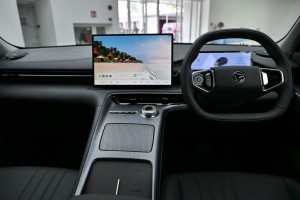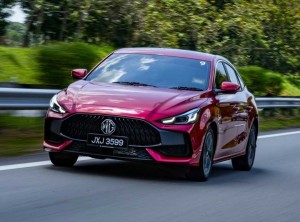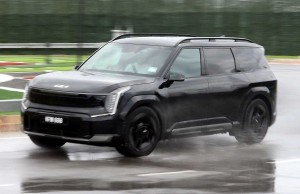BEIJING: China has taken to autonomous taxis in a big way, with the driverless cabs conquering roads in many big cities. Not everyone here is happy about the upsurge in erratically self-driving cars. In Europe, meanwhile, this level of automated driving is far off.
When a bus suddenly veers into the right-hand lane, the sensors in the "robotaxi" briefly go into a spin and the onboard computer slams on the brakes – even though the highway lane ahead is clear.
This sudden manoeuvre prompts a lorry to nip by on the left and the autopilot has to counter-steer in a hurry.
Road behaviour like this is common in the Chinese capital Beijing since if you want to get from A to B in Yizhuang district, which is characterised by factories and tall office towers, you can now order an autonomous taxi without a driver.
In terms of value for money, it is definitely worth it. A journey of around 8km costs just over 11 yuan (RM6).
Robotaxi providers are undercutting prices in the already low-cost taxi business, which has shaken the gig market in a country where many people employed in precarious jobs like taxi driving are worried about losing their livelihood.
It is fascinating to watch the steering wheel in a robot taxi turn as if by magic although it does take a bit of getting used to.
Unlike other road vehicles, the driverless car stoically keeps to the specified 50kph. At the slightest danger, the computer applies the brakes near-instantly which can catch passengers unawares.
More than 30 cities in China have issued test licences for autonomous driving, although robot taxis are more likely to be found on the roads in the megacities where public acceptance is higher.

In Beijing, however, there is still a human attendant in the driver's seat who can over take the wheel in an emergency.
Wuhan in central China has gone a step further. The fleet of 100 or so taxis from Apollo Go operate entirely without human assistance.
The provider is backed by tech giant Baidu, China's equivalent of Google. The taxi is summoned using a mobile phone app. To open the door, the passenger scans a code. Inside, a pin previously received by text message is entered on a screen – and the journey can begin.
In Beijing, with its six rings of motorways and often congested roads, robotaxis have so far only been allowed to drive in certain areas away from the city centre.
But taxi drivers are already irked by the erratic behaviour of robotaxis which "can't handle" the complexities on the city's roads, says Mr Li, who works for one of the many Chinese driving services similar to ride hailing service Uber. "The road conditions are simply very complex." This means the robotaxis often drive too slowly or brake too cautiously.
Not far from the test zone, taxi driver Hao is charging his electric car. He doesn't envisage much competition from the autonomously driving rivals. "Beijing is full of people who are in a hurry," he says.
The robotaxis are not as flexible as real drivers, who can take shortcuts and adapt the route for passengers who want to get to the station or workplace quickly, he says and yanked the charging cable out of the typical orange and blue taxi. He is not worried about the future either. "If this doesn't earn me any more money, I can switch to another job."
In Europe, meanwhile, the legal framework for taxi companies is stricter and requires a high level of safety and liability for the systems, says Philipp Kupferschmidt from management consultancy Accenture.
"In places like Germany, there is also greater scepticism and reluctance on the part of consumers towards autonomous driving."
According to Pedro Pacheco, automotive analyst at market research firm Gartner, the car-centric country of Germany has comparatively few companies working in this field.
So far, Volkswagen's electric buses have been driving around the streets of Munich and Hamburg in partnership with the software company Mobileye - albeit in test mode.
In Hamburg, customers will be able to test drive them this year. Kupferschmidt expects a gradual introduction and expansion of the area of application of autonomous vehicles and robotaxis.
The cars will still mainly be monitored and accompanied by an attendant or else by remote control. However, it is unclear whether the technology will ever operate at level 5 – the ultimate discipline, which sees the car assuming complete control.
The legal basis has already been laid down by lawmakers. For example, an autonomous shuttle bus can operate in designated and authorised areas such as trade fair grounds.
Autonomous driving is already a topic for major manufacturers such as BMW, Mercedes and Volkswagen. However, level 5 is still a long way off. And yet many people are probably familiar with functions from level 2, such as automatic parking.
Fintl notes: "Partial automation, such as the motorway pilot, has made the leap into series production." The introduction of such systems in the mid-range cars is imminent. "When it comes to robotaxis on roads, however, other countries are a length ahead," he says.
"Even though the technology still has to mature further and the cost advantages compared to human drivers still have to be proven, the large test fleets in the respective countries are a significant advantage."












